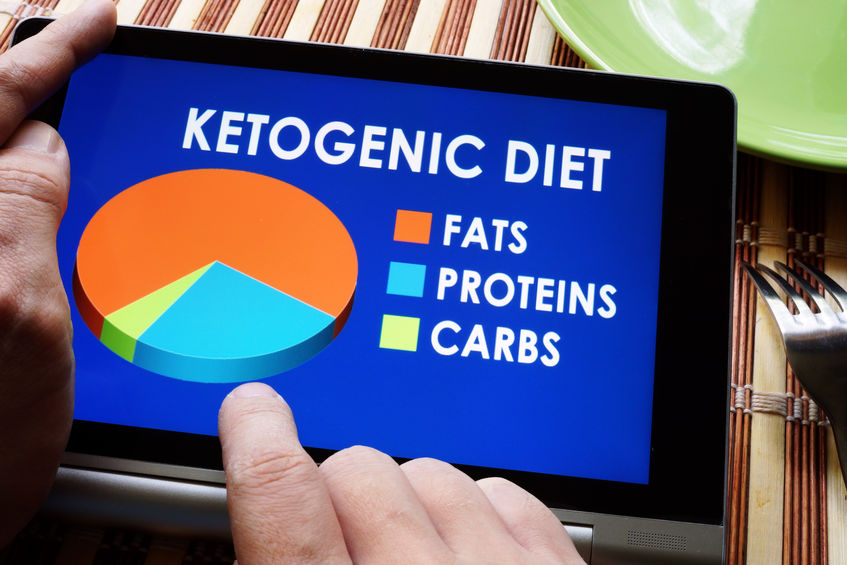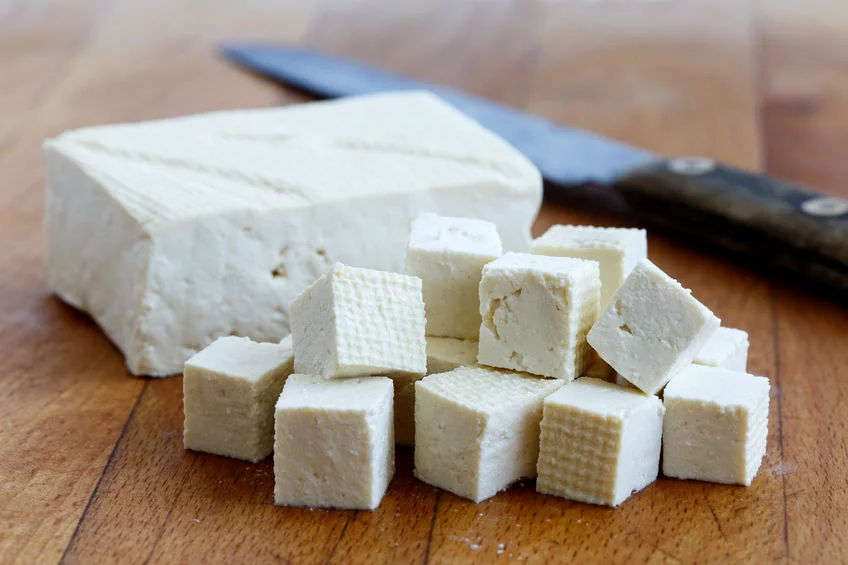There probably isn’t a person on this planet that doesn’t know about the keto diet or seen it splashed all over their social media feeds. And for good reason – it is providing incredible health and weight loss benefits! But it is completely different to what we have been taught with regards to eating a healthy diet.
For over a century, the USDA has been issuing food guidelines on what a typical healthy diet should look like. The way these guidelines have been presented have evolved over the years to what we saw in 1992 with the introduction of the food pyramid. However, the actual guidelines themselves have pretty much remained the same – consume a high amount of carbs/grains, fruits and veggies each day and significantly lower your consumption of fats.
The triangular shape of the food pyramid was designed to make it easier to see what a healthy diet looks like and to learn about nutrition. It is designed with a big base level which includes foods that should make up most of your calories, and then working its way up through different food groups to the tip indicating the foods you should limit. The bottom tier contains carbohydrates such as bread, grains, pasta and cereal, fruit and vegetables are one tier above that, followed by protein (including dairy), with fats forming the small tip of the pyramid.
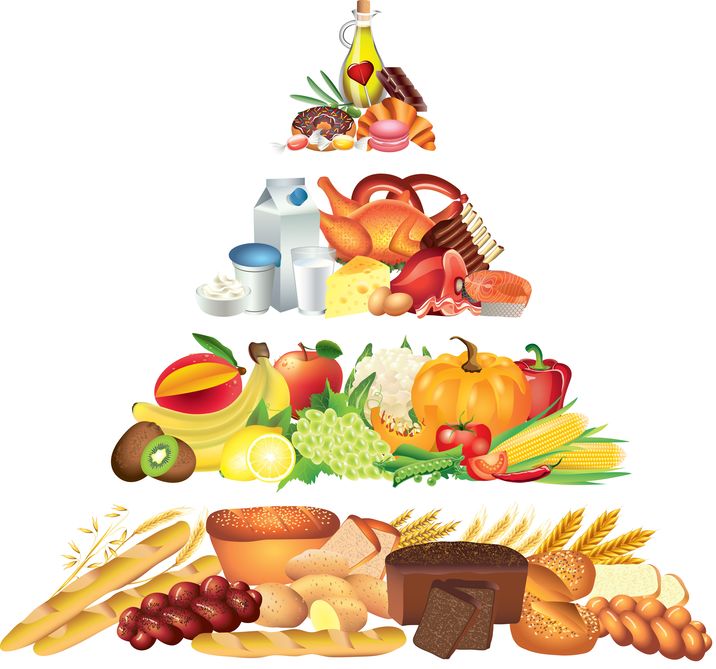
Generations of Americans are raising their children on this premise that a high-carb, low-fat diet is the healthiest diet, and this idea that fats are evil does not seem to be a notion that many are willing to give up so easily. That is until now and the rise in popularity of the keto diet.
The Keto Food Pyramid: Changing Things Up
The keto food pyramid has literally flipped the traditional food pyramid on its head. With the keto food pyramid, you have fats forming the main base tier and carbohydrates forming the tip. The keto food pyramid also totally excludes the primary foods found in the traditional food pyramid such as bread and pasta and instead replaces them with more complex carbs such as fruits, vegetables, nuts, seeds and berries. When following the keto way of eating, your diet is made up of around 70% fat, 25% protein and 5% carbs.
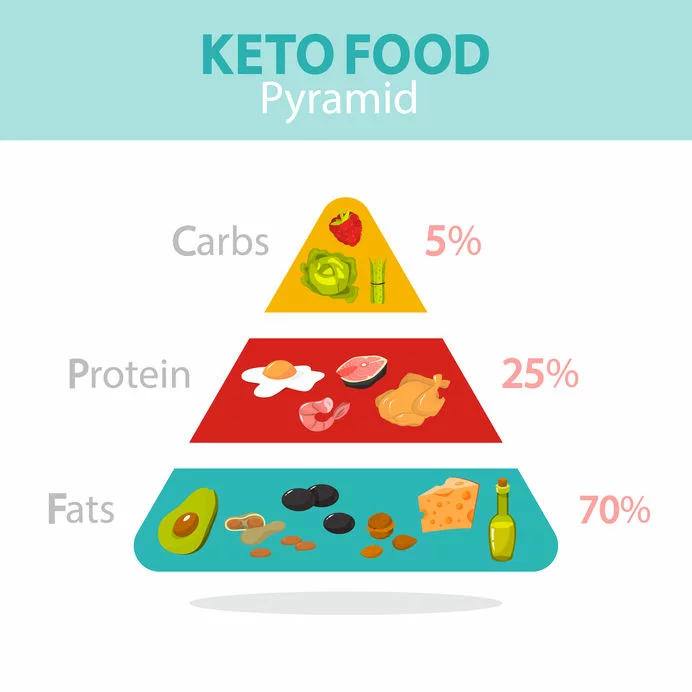
One of the biggest issues of the traditional food pyramid is not taking into account that not all fats are created equally. It just labeled all fats as bad and foods that are high in fat were put in the ‘do not eat’ list, regardless of the fact that there are certain healthy fats that provide essential health benefits. So even though the limiting of fat in our diet was supposed to make us healthier, it hasn’t. Most likely because we are missing out on the numerous benefits of healthy fats.
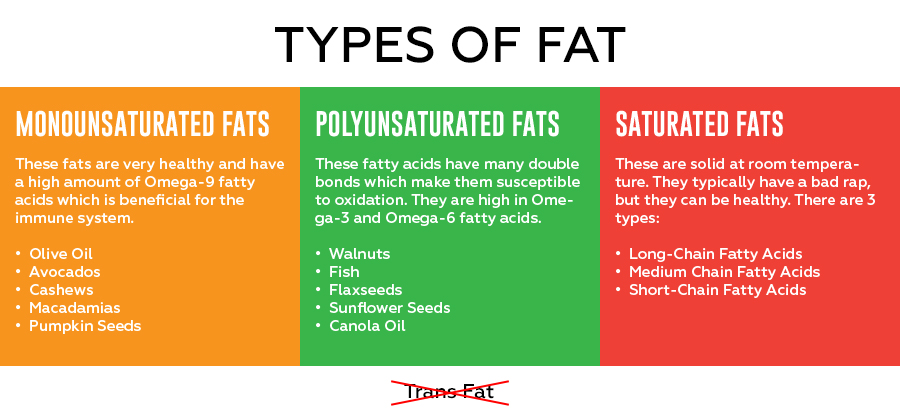
While processed fat is really bad for you, there are many fats derived from natural oils and animal products which are beneficial to include in your diet. Current research has shown that including healthy fats in your diet is essential for your health and can actually improve the ailments that the traditional low-fat diet was attempting to achieve, such as benefiting heart health.
The History Of Keto
The switch to this high-fat, low-carb way of eating is not actually a recent discovery, nor is it simply another weight loss trend. This specialized diet has actually been around since the 1920s as it was used in medical settings as a solution to help epilepsy patients control their seizures. The ketosis effects of this kind of diet seemed to have an effect on their brain, helping to prevent seizures. Weight loss just happened to be a noted side effect of this diet. Current research is catching up with the many health benefits the keto diet provides and we are slowly moving away from the concept that fat is bad for you. We are now learning how important fat is for our overall health and wellness.
The Rise Of The Keto Food Pyramid
The typical American diet, which is very carbohydrate-heavy, is showing to do more harm than good, leading to numerous health issues such as:
- Hormonal imbalances
- Gut problems
- Weight gain
- Cognitive disorders
- Increased risk of heart disease
When you think about it, our ancestors were typically eating a diet of wild animals and fruits and vegetables. Today, our diets are focused around grains and carbohydrates which tend to spike blood sugar levels more than other foods which are higher in fat.
The one thing that we all learned in school about health and nutrition was that in order to function, our body needs fuel. And this fuel comes from the food we eat. Typically, we have been taught that carbohydrates are this fuel. When you eat carbohydrates, they are broken down into sugars which can be quickly used by the body for energy, which is why they are the preferred energy source and the body will use this energy source before others. Any excess sugar that your body doesn’t use will be converted into glycogen and stored in the liver.
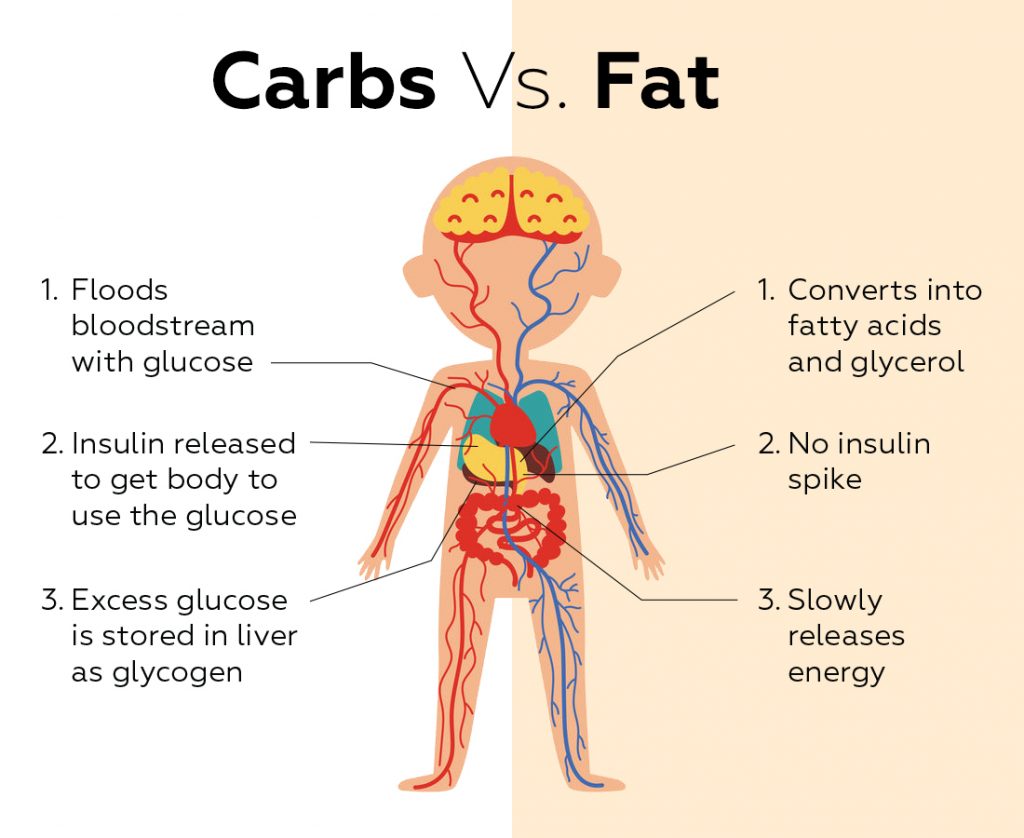
Fats are another energy source for the body. Unfortunately, we have all been scared away from fat. However, they are, in fact, a more efficient energy source. They may be slower to digest and utilize, but they provide a slower-release energy, which means your blood sugar isn’t spiking and dipping all the time and your energy levels are more maintained and steady.
This is what the keto diet is based on, using fat for energy instead of glucose through a process called ketosis. The body’s first choice as an energy source is glucose from carbohydrates as it is quick to use, but when this energy source is not available, it will need to find another one – fat. So in order for the body to burn fat, you need to give it fat to burn. By seriously limiting your carbohydrate intake, the body goes into ketosis and will burn stored fat instead, producing ketones in the bloodstream as a result. These ketones will provide your body with a new energy source and help you to continue burning fat. You need to consume most of your calories from fat on this diet because you will need to provide your body with energy to function. Some people also turn to taking exogenous ketones to help the process along and stop any drops in energy as your body adjusts.
Adding Exogenous Ketones
Supplementation is an excellent way to make sure your body is getting what it needs and also helping your body adjust to this new way of eating. There are many different supplements such as MCT oil (helps increase fat intake) and exogenous ketone salts (helps replenish lost electrolytes as well as get your body into ketosis faster) which can help you in your shift to a better and healthier lifestyle.
Eat More Fat
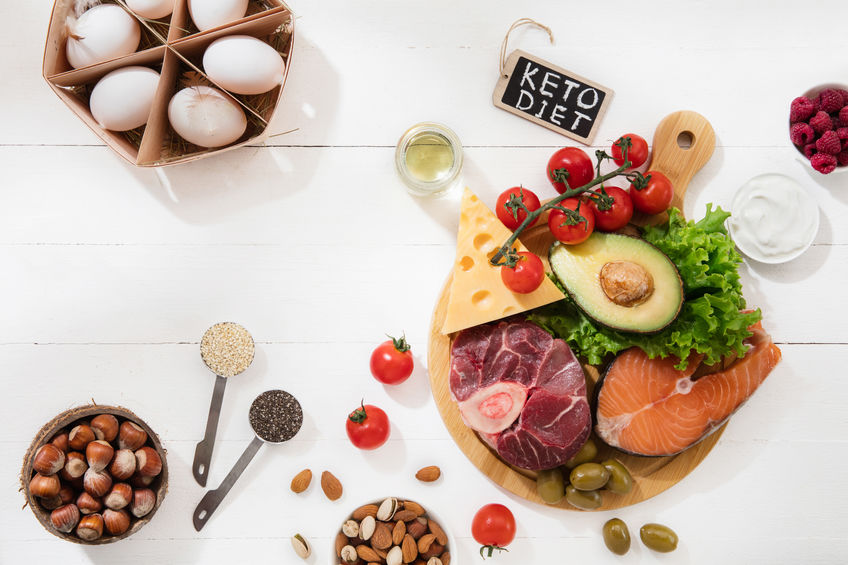
With the keto food pyramid, fat will make up 70% of your diet. Sounds amazing, right? Finally a diet that will let you eat all the fat you want. Not exactly. As mentioned previously, there are good fats and bad fats, which is what the traditional food pyramid ignored. By cutting out fat from our diet, we missed out on a lot of health benefits provided by healthy fats. Fat is essential for protecting the myelin sheaths around nerves, providing energy, and helping the body absorb certain vitamins and minerals.
The bad fats to stay away from are trans fats which is what is found in processed food. These fats increase levels of LDL cholesterol (the bad kind) in the blood which is connected to heart disease, stroke, and diabetes. Good fats to include in your diet include monounsaturated and polyunsaturated fats with some saturated fat. The best sources of healthy fats to eat on the keto diet include:
- Coconut oil
- Avocados and avocado oil
- Chia seeds
- Flaxseed oil
- Fatty fish such as tuna, salmon, and mackerel
- Pumpkin seeds
- MCT oil
- Ghee
- Grass-fed butter
- Grass-fed red meat
- Nuts
- Olive oil
Getting most of your daily calories from fat is probably the hardest concept to get used to for keto newbies. It requires a huge mental switch from everything you have been taught about fat. One common fear is that eating fat will make you fat. We now know this isn’t true and that the biggest culprit of weight gain is consuming more calories than you use, so this is important to keep in mind no matter what kind of eating plan you follow. One benefit of a high-fat diet is that you will probably notice you feel fuller for longer compared to when eating a diet high in carbohydrates. This makes it easier to keep your portion sizes under control. It will also help keep binge eating to a minimum and help reduce cravings.
Although the keto diet is all about fat, eating too much fat can have some unwanted side effects, so you want to make sure you get the balance right. You’ve probably heard of keto diarrhea, which is when the body builds up an excess of fat and needs to expel it. Your body needs to get used to this way of eating, and side effects should pass after a week or two, so don’t feel disheartened. Keto supplements can also help speed up the process and help your body adjust.
Watch Your Protein
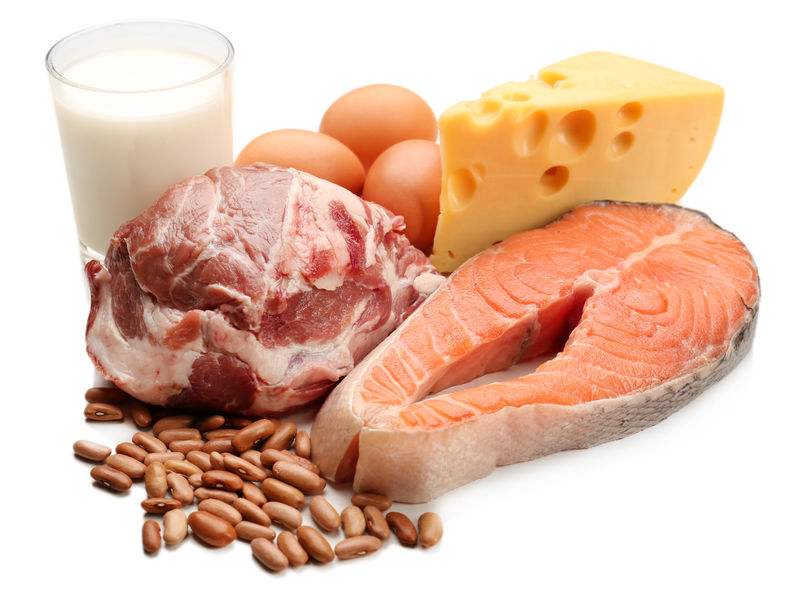
The next level up on the keto food pyramid is protein, which should only make up around 25% of your calories. The biggest misconception about the keto diet is that it is high in protein. However, eating a high amount of protein will actually not get your body into ketosis. This is the biggest difference between the keto diet and other low-carb diets which are typically high in protein. Any excess protein that your body doesn’t use will be converted to glucose, which we now know is the body’s favored energy source, and so you won’t reach ketosis.
The best sources of protein to include on the keto diet include:
- Eggs
- Bacon
- Full-fat dairy products and cheese
- Fish
- Lean meat
- Fatty meat
- Chicken
You will notice that many of these foods fall under the fat category too, so keep this in mind when you are meal planning and trying to increase your fat intake. Lamb actually has a higher fat to protein ratio compared to most other types of meat. Another thing to note is that while dairy products such as full-fat butter, cream, and cheese are a keto dieter’s dream food, regular milk is not keto-approved as it is very high in carbs. One cup of whole milk contains about 11 grams of carbs! Low-fat dairy products are also higher in carbs than full fat.
Limit Carbs
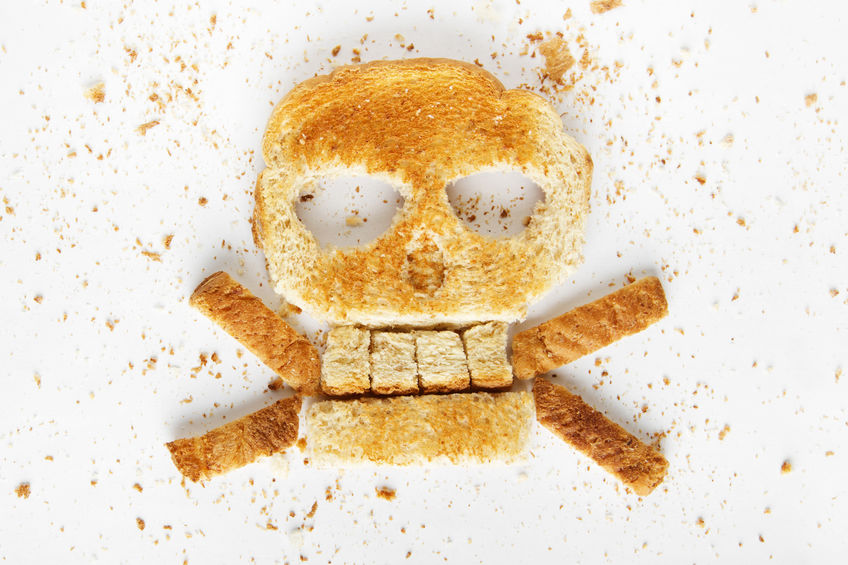
Typical carbs that we were all raised on such as bread, pasta, potatoes, white rice, and other grains are completely eliminated from the keto food pyramid. As the amount of carbs you are allowed on the keto diet is only about 5% of your calories, these foods would just send you way over your limit. Instead, the keto pyramid includes vegetables, nuts, seeds, and some fruits at its tip. Veggies are essential for obtaining various vitamins and minerals, but make sure to choose low-carb options. A good trick to know if a vegetable is considered high or low carb is where it grows. If it doesn’t grow below the ground then it is low-carb. Good options include:
- Broccoli
- Mushrooms
- Spinach
- Mushrooms
- Cauliflower
- Bell peppers
- Asparagus
- Zucchini
- Green beans
- Lettuce
- Kale
- Celery
- Eggplant
Fruit is limited on the keto diet because fruit is high in sugar which means high in carbs. However, fruits such as apples, pears, and pomegranates aren’t as high in sugar, so they can be eaten in moderation.
The Top Of The Keto Food Pyramid – Nuts And Berries
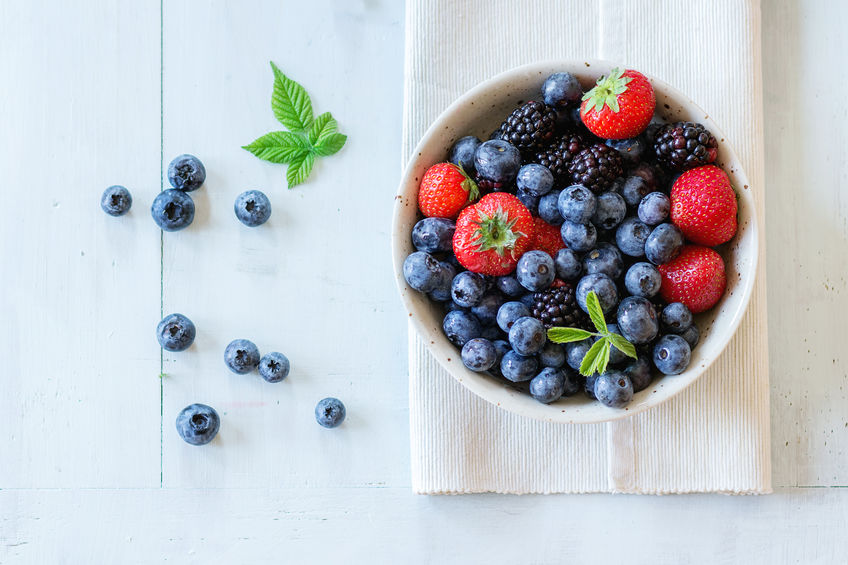
While nuts, seeds and berries fall into the top of the keto food pyramid, they are actually very healthy to include in your diet. You should just watch your portions. Nuts such as almonds, walnuts, cashews pecans, pistachios, and chestnuts are an excellent source of fat, but overeating them can considerably raise your carbohydrate consumption. Macadamias are probably the best nuts to eat as they are significantly lower in carbs compared to other nuts, while being very high in fat.
The same goes for seeds and watching your portion sizes. Flaxseeds and chia seeds are packed full of essential nutrients so you only really need to include a little in your meals.
Berries are an excellent source of antioxidants and they are also very low in sugar making them the best fruit to eat while on a keto diet.
The Keto Food Pyramid: A Tool To Live By
With the rate of obesity on the rise as well as the increase in numerous health problems, more and more research is going into studying our diets and if the conventional high-carb, low-fat diet is really the best choice. What we are discovering is that low-carb, ketogenic diets are actually shown to have more health benefits, including weight loss, than the conventional low-fat diet. Fat is no longer the bad guy. Now we just need our heads to catch up with this concept.
When looking at the keto food pyramid you will see that it is really all about eating real whole foods, and staying away from unhealthy processed food. Following this way of eating is a lifestyle, not just another fad diet. If you want to live by the keto food pyramid you need to make sure you are giving your body everything it needs, or you won’t feel your best. And when you don’t feel your best, it’s easy to slip into unhealthy habits. Your body needs the right calories in the right quantities to function properly. If you are not eating carbs, you need to make sure you are eating enough fat or you will feel tired and lethargic.
There are so many recipes out there to help you in preparing keto-friendly meals. Preparation is key to ensure that you have all the right ingredients in your pantry and an open mind about using healthy fats to create yummy meals.
Do you want to find an effective Keto treatment? Check out our top rated Keto products


